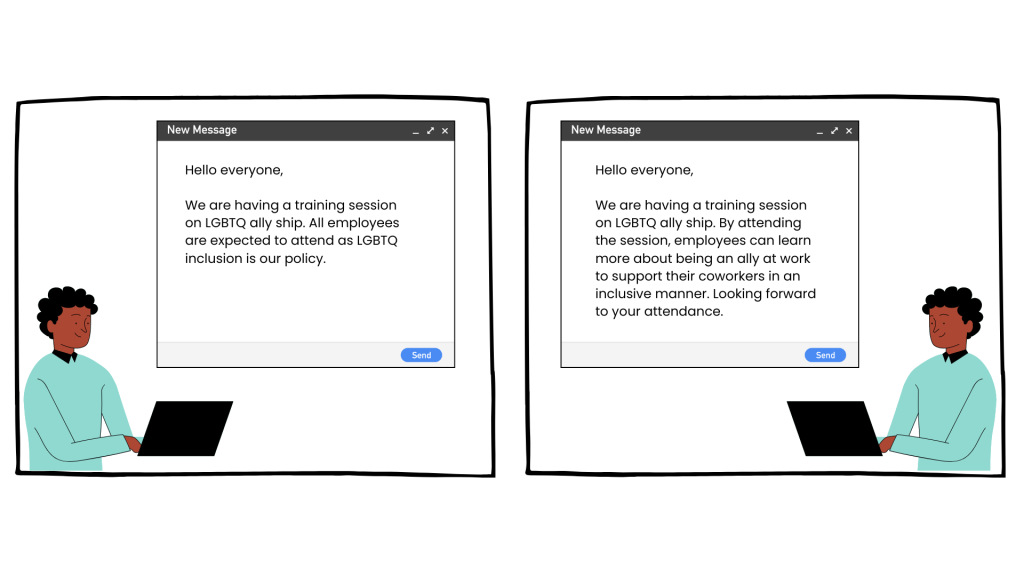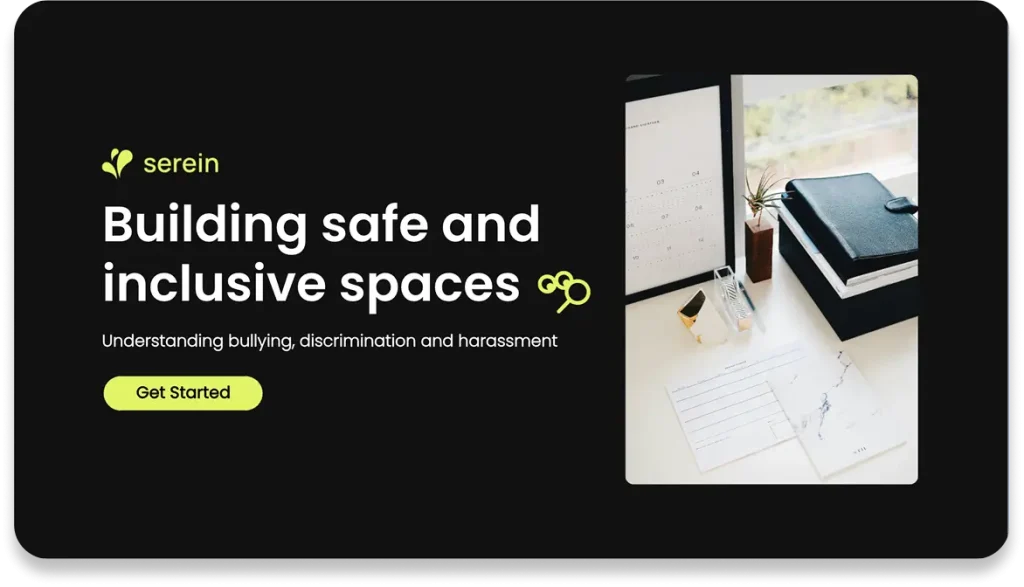Maya is a talented programmer, thrives in quiet, focused environments.
Maya has always aspired to work in this software development company. They are known for their forward thinking approach and cutting edge business policies. They have been growing very fast and have hired some really smart engineers and designers. They have recently implemented an “open office” policy to encourage a team to collaborate more. However, this new policy has had an unintentional negative impact on some of their employees.
The new policy has created a noisy and distracting workplace for her, leaving her feeling drained and unproductive.
Meanwhile, David is a hard-of-hearing employee. He struggles to follow conversations in the echoey space, leading to missed information and feelings of isolation.
Both Maya and David long for a policy that considers diverse needs. This situation serves as a prime example of how a poorly framed policy can unintentionally exclude employees. Inclusive policies are crucial for creating a workplace that respects and values diversity among its employees. However, the effectiveness of these policies depends significantly on how they are presented.
Here’s where framing comes in.
As we celebrate Pride Month, it is time to go over policies that are relevant this month and reflect on how they are framed. Inclusive policies are not just about checking boxes but about fostering an environment where all employees feel valued and supported. Clear communication and ensuring employees understand not just the ‘what’ but the ‘why’ behind them, creates a culture of empathy.
Can you see the difference in impact of the two emails?

When the message is reframed in the second image to highlight the positive benefits of participating in the training session, its impact is significantly enhanced. Instead of viewing it as a requirement, attending the session is seen as a chance to make a positive contribution. When employees grasp the intention of inclusion policies, they’re more likely to actively participate in creating an inclusive environment. By understanding and being part of the policy’s rationale, employees can feel more informed and involved.
Harvard Professor Amy Edmondson highlights framing as the crucial initial stage that establishes psychological safety. For LGBTQIA+ employees, this translates to knowing their organization supports and values their identity. Policies should explicitly state protections for sexual orientation, gender identity, and expression, using clear and emphatic language.
Edmondson’s research, which involved studying the implementation of a new innovative procedure across 16 hospitals, revealed a fascinating insight. The most critical factor determining these initiatives’ success or failure was how leaders introduced or “framed” the new process. This finding underscores the significance of the Framing Effect, a powerful tool that can be harnessed to influence outcomes positively. When formulating policies, it’s essential to adjust the framing to align with the desired outcome consciously.
Remember Maya and David? A well-framed policy on workspaces could have considered offering quiet areas for focused work and sound-dampening solutions. This demonstrates how framing with empathy can lead to policies that truly benefit a diverse workforce.
It is crucial to frame policies in a way that makes LGBTQIA+ employees feel safe to embrace their sexual orientation or gender identity, and this can be influenced by how inclusion policies are communicated.
Effective framing requires understanding workplace culture, employee demographics, and existing concerns regarding LGBTQIA+ inclusion. To do this, organizations can conduct surveys or focus groups to gather employee feedback, review existing policies to identify areas for improvement and consult with diversity and inclusion experts to ensure the policies are comprehensive and practical. This allows organizations to tailor their policies to resonate with their employees and move them in the desired direction.
Framing inclusive policies requires a careful choice of language that is inclusive and respectful but also precise and clear. Ambiguity in language can dilute the effectiveness of these policies and may lead to misunderstandings. Therefore, policies need to be articulated in a manner that explicitly and compassionately protects individuals, focusing on their sexual orientation, gender identity, and expression. Employers should encourage feedback and make it easy for employees to suggest improvements, showing that inclusivity is a dynamic process that evolves with the organization.
Organizations must communicate these policies effectively, demonstrating a firm commitment to supporting LGBTQIA+ employees. This can be achieved through formal communication channels and everyday interactions, ensuring that the essence of these policies is understood and valued by everyone within the organization.
A well-framed inclusion policy strikes a balance between clarity, empathy, and action. By considering the context and psychological safety, organizations can create an affirming work environment for LGBTQIA+ employees. In the end, the success of inclusive policies lies not just in their formulation but in their communication and implementation. By engaging in open dialogue, encouraging feedback, and continuously refining policies based on the needs of their workforce, organizations can create a truly inclusive workplace. These efforts not only support individual well-being but also ensure the company’s commitment to inclusion is not lost in translation.


